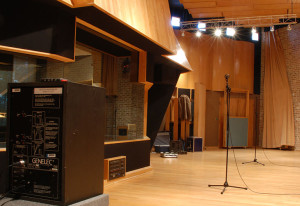Signal To Noize has provided a phenomenal set of classic reverb rack-gear impulse response sets from Lexicon, Eventide, TC Electronic, Yamaha, and more. They are free to download and try and donations are certainly appreciated.
The Impulse Sets include the following gear:
- Eventide H3000 Reverberation Impulse Response Pack
- Lexicon 480L Impulse set
- Lexicon M200 Impulse set
- Lexicon M300 Impulse sets
- Lexicon PCM 70 Impulse Set (3 sets)
- Lexicon PCM 90 Impulse Set
- TC Electronic M5000 Impulse set
- TC Electronic The Reverb 6000 Music Pack
- Quantec QRS/XL Reverb Impulse & Room Simulation Impulse set
- Yamaha SPX990 Impulse Pack
- Bricasti True M7 – Impulse Pack
Impulse responses are used in conjunction with Convolution Reverbs which are specialized audio plugins. In the case of reverb for example, an audio engineer goes into a physical space with speakers and microphones and samples (records) what the reverb in the room sounds like, and then makes that sound available to us as an impulse response set or pack, which can be loaded into an audio plugin called a Convolution Reverb. A Convolution Reverb has no sounds or patches of its own but you can get the sound of any piece of gear or room, cathedral, club, concert hall, etc., to use in your mixes! And it’s the actual reverb sound of a real space that you could look up on Google Maps-not a made-up mathematical/electronic simulation. This sampling method can also be applied to hardware rack-based audio gear like the famous reverbs listed above. What are we trying to say between the lines here? You can get the reverb effects of a Lexicon 480L or an Eventide H3000 or Yamaha SPX990 (and more) for free. OK we said it.
In a practical non-technical sense,
Convolution technology is used to capture ambiences and reproduce them on the computer. Without getting into too much technical detail an impulse file is a short burst of audio recorded in a real space, or in this case, through a hardware reverb unit. A convolution reverb plugin then uses this impulse file to determine the properties of the reverb and transform those properties onto any sound you are feeding into the plugin. Convolution technique can be applied to just about anything from reverbs to EQ’s, compressors and preamps. But we’ll stick with reverbs here…
Thanks and a shout out to Ilpo for the above quote. Ilpo (a.k.a. Resound) is a music producer and DJ from Finland. Be sure to check out his full article “4 Superb Impulse Response Reverb Packs To Download” in which he has listed his 4 all-time favorite Impulse Packs/Sets, time-tested over the years. He also lists some details about each one.
There is also a fantastic tutorial over at TutsPlus called “How to Use Convolution for Reverb & Effects” that we highly recommend you take some time to read and watch if you’re new to the topic. This thorough treatment of the convolution reverb topic includes text, videos, sound samples, and sources to acquire free and commercial audio plugins that handle convolution. Also covered, as Ilco mentions above, convolution and impulse response sets and technology are not limited to reverbs but can include EQ, compression, and more.
Finally, for super-techie audio engineers here is one more link to a very detailed explanation by Martin Walker at Sound on Sound, “Convolution Processing with Impulse Responses – How It Works“. Here’s a small sampler of this in-depth technical article:
Although convolution is often associated with high-end reverb processing, this technology makes many other new sounds available to you if you understand how it works.
Convolution or ‘sampling’ reverbs are now extremely popular, and it’s not hard to see why. They provide the sounds of real acoustic spaces that are far more realistic than most reverb effects (although these remain incredibly useful when you want more flexibility), and can also give your recordings the sound of being passed through an exotic mic, preamp, compressor, guitar amp, or indeed any other effect, both hardware and software. Each of these spaces or devices is encapsulated into what is called an ‘impulse response’ file that can be loaded into a compatible convolution playback device.
As with most other technologies, many people will be content to use the IRs (impulse responses) bundled with their particular playback device, and to download other free ones from the Internet. While capturing your own impulse responses to the standard of commercial libraries may be daunting, it’s not particularly difficult to get respectable results with a little gear, and you don’t have to restrict yourself to the usual halls, churches, and studios either.
Effect specialists in the film, TV, and video-games fields are finding it extremely useful to capture IRs on location for use later on when placing overdubbed dialogue or effects into a real acoustic space. Moreover, not many people have cottoned on to the fact that you don’t have to restrict yourself to IRs of existing spaces and gear — once you abandon realism and start convolving other audio files there’s a bizarre new world of treatments out there for your audio tracks.
Ask Audio Mag has a great Ableton Live 9 tutorial on using the built-in convolution reverb “The Joy of Convolution Reverb and Impulse Responses in Ableton Live“.
Here’s a short list of Convolution Reverb Plugins some free and others not:
- Ableton Live 9 – Convolution Reverb
- Apple Logic Pro – Space Designer
- Avid Pro Tools – Space
- Liquidsonics Reverberate
- Lernvall – LA Convolver (Mac OSX only)
We hope this article has been informative and helpful in getting you started on the road to convolution reverb audio plugins, or that it has tweaked out your impulse response set library in an awesome way!
Feel free to shout out below in the comments with your own tips, tricks, and questions and as always…
Rock On!

